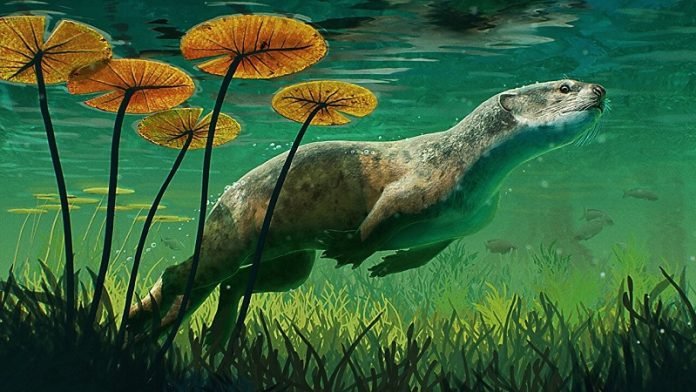
Ever wonder how animals that live in the water find their food?
Well, seals use their whiskers to feel vibrations in the water and locate a tasty snack!
But did you know that their ancient relatives who lived millions of years ago might have done the same thing?
A new study reveals that a 23-million-year-old creature, which looked more like an otter than a seal, likely used its whiskers to look for food and explore the water.
The study focuses on a fascinating ancient animal known as Potamotherium valletoni.
Unlike today’s seals that mostly live in the sea, Potamotherium and its relatives lived on land or in freshwater places like rivers and lakes.
Before this study, scientists didn’t really know when seals and their relatives started using their whiskers to find food.
To solve this mystery, Alexandra van der Geer and her research team compared brain structures of this ancient animal to other extinct and living meat-eating mammals, including bears and relatives of seals. How did they look at their brains, you ask?
Well, they made casts, or 3D models, of the inside of the skulls to get an idea of what the brain looked like.
One specific part of the brain got their attention: the coronal gyrus. This part is thought to be involved in processing signals from whiskers. When they compared the size of this brain part, they found something interesting.
Potamotherium had a larger coronal gyrus than animals like the Asian small-clawed otter, which uses its paws to find food.
However, it was similar in size to other ancient seal relatives and animals like the Eurasian otter that use their whiskers to explore.
So what does this mean? It suggests that Potamotherium probably used its whiskers to look for food, maybe along with its front legs. Imagine it like a whisker detective, feeling its way around underwater to find something to eat.
This study tells us something exciting about how ancient seals made the big move from living on land to being underwater experts.
The researchers think that using whiskers for finding food could have been a stepping stone to help these ancient seals get ready for life completely underwater.
So, next time you see a seal skillfully hunting in the water, remember that its ancient relative might have been the first whisker detective in the family, paving the way for seals today!
Isn’t it amazing how a tiny part of the brain can reveal such big secrets about how animals lived millions of years ago?
Thanks to the curiosity and hard work of scientists, we’re slowly piecing together the story of how some of our favorite water animals came to be so good at what they do!
Follow us on Twitter for more articles about this topic.
Source: Nature Publishing Group.



